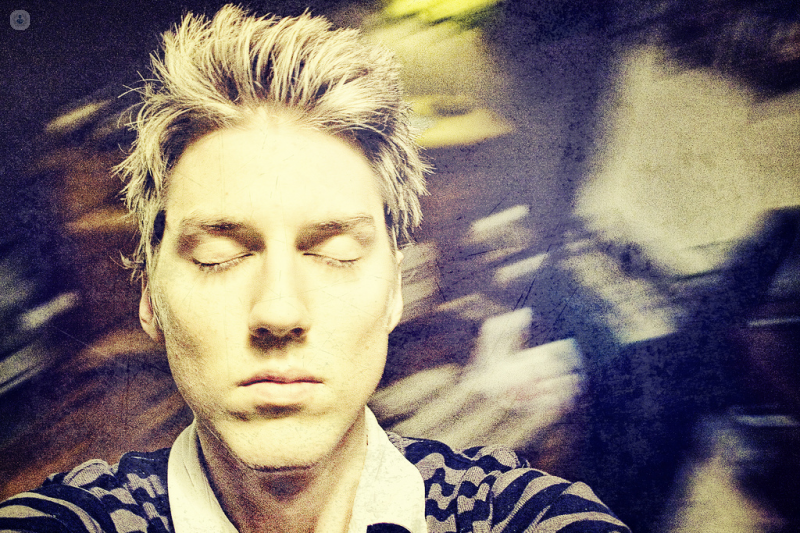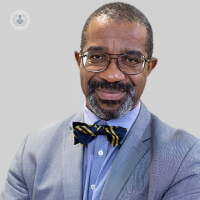Turning the tables on benign paroxysmal positional vertigo
Escrito por:Benign paroxysmal positional vertigo (BPPV) is an inner ear problem and one of the most common causes of a sudden, dizzying sensation that feels as though your head is spinning. This sensation is known as vertigo. Expert ENT surgeon Mr Anthony Owa is here to explain this condition and how to treat it.

What is benign paroxysmal positional vertigo?
BPPV is one of the most common causes of vertigo, which arises from a problem in the inner ear. The key symptoms are recurring episodes of vertigo, which are usually brief but intense. Along with the dizziness and sense that you or your surroundings are spinning, you may also experience unsteadiness, loss of balance, nausea, and vomiting.
What causes BPPV?
The ear contains a tiny organ called the vestibular labyrinth, which is composed of three semi-circular canals and two otolith organs, which contain small particles or stones (otoconia). These stones help us to monitor the movement of our heads and sense the effect of gravity to give us a sense of balance.
If these stones become dislodged due to damage to the inner ear, a blow to the head, or unknown factors, they can move into the semi-circular canals, typically the posterior semi-circular canals, where they can disrupt our sense of balance, causing sensations of vertigo.
The condition can take years to resolve in its own, but several manoeuvres can help set it right. Medicines have very limited role in its management.
Particle repositioning manoeuvres
First, the diagnosis is confirmed by having the patient lie flat with their head to one side and eyes kept open. If the patient has BPPV, the eyes would move in characteristic fashion briefly and the patient may experience a short spell of dizziness. This test also confirms which ear is the problem.
The most effective procedure, first described by Epley in 1992, involves placing a mastoid vibrator behind the ear and turning the patient slowly through 270 degrees, before sitting them up again. This manoeuvre aims to move the particles out of the semi-circular canals and back to the otolith organs. It is advised to repeat the procedure to ensure all the stones are moved back to their correct place. The patient then sits upright for 20 minutes before they are sent home. Using a mastoid vibrator is not essential for the procedure to work and I rarely use it.
For the next two weeks, the patient is advised to sleep on the unaffected side of their head and try to avoid sudden head movements. Some patients may require more than one session to resolve the condition. Not all practitioners give this advice.
Other manoeuvres include the Semont liberatory manoeuvre, in which the patient sits with their head turned away from the affected ear. They are then turned on their side with the affected ear downwards, before being suddenly swung 180 degrees to end in a face-down position. This manoeuvre is repeated five times twice a day.
The Brandt-Darroff manoeuvre is similar, but pauses for half a minute in the mid-position, and keeping the head turned towards the ceiling while lying on the side.
These manoeuvres may be performed at home, without supervision, but some patients may require help.
In rare cases when these manoeuvres don’t work, there are surgical options. However, like many surgical procedures, these carry risks: there is a possibility that patient’s hearing will be affected or even lost, and facial nerve weakness is also a risk.
If you are experiencing symptoms of vertigo, the first thing you should do is see your doctor or a specialist, who can diagnose the cause and discuss with you the best treatment options for your case.


